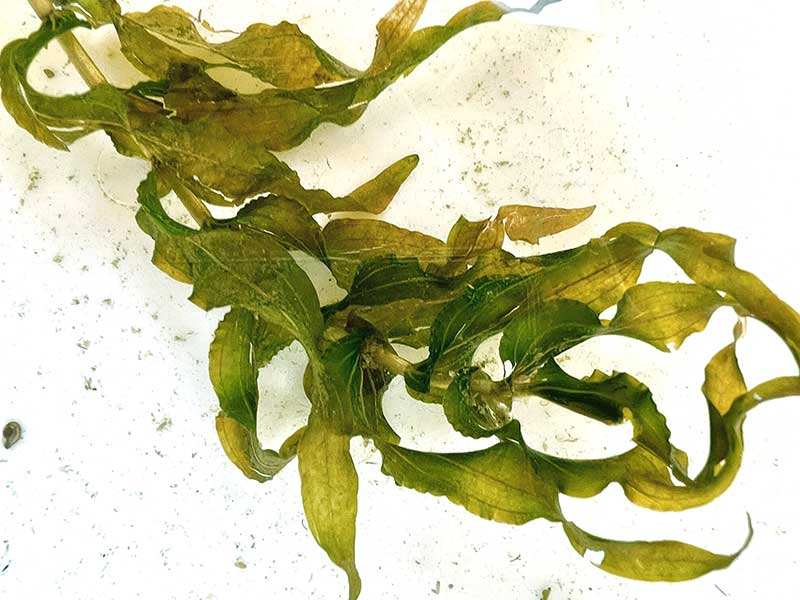Potamogeton richardsonii / Richardson’s pondweed
- submerged aquatic with emergent inflorescence
- crinkly, broad-ish leaves which clasp the stem
- variable length internodes
- often tangled up with sago pondweed
Also known as: red-head pondweed
Richardson’ pondweed is a submerged aquatic species, relatively common in the upper Teton River where it may be seen alone, or tangled up with sago pondweed. It is native to much of North America, including all of Canada and the northwest. It is perennial, re-growing from a buried mat of rhizomes, potentially forming large colonies. Above the substrate, it grows a narrow, unbranched stem up to 3.5 feet long.
The leaves are all submerged–not floating–and up to a foot long and an inch wide, although these are highly variable with growing conditions. More notable is that the leaves have wavy or “crinkly” edges with pointed or rounded tips. Each leaf is thin, perhaps only a few cells thick. As can be seen in the gallery photos, the leaves have a prominent midvein and 3-5 fairly prominent veins running parallel to it. The stems are round, usually branched and straw-colored. The internodes–the space between leaves on the stem–may be short or long, depending on growing conditions (especially water depth and light level). In general, down to about 6 feet, there is a direct relationship between water depth and internode length.
If one had several species of Potamogeton in hand and wanted to tell them apart, Richardson’s has stalkless leaf bases that clasp the stem. Although it is barely visible in one of the gallery photos, each leaf also has a small, whitish stipule that isn’t connected to the leaf blade. With age, these shred and end up just looking like a few fibers. But they’re there.
Richardson’s pondweed produces an inflorescence that is a spike of flowers rising above the surface. It is ½ to 1½ inches long and arises from the top leaf axils. Each spike has 6-12 whorls of flowers. Despite being a monocot, each flower has 4 tepals (green), 4 stamens and a single style.
Interesting bits – The genus name, Potamogeton derives from two Greek words, potamos, meaning river, and geiton, meaning neighbor. So, it’s a group of plants living in rivers.
The effects of light, temperature, water depth and substrate mentioned above have actually been studied here. There’s just no accounting for physiologists.
| Blossom size | |
|---|---|
| Color | |
| Family | |
| Inflorescence size | |
| Inflorescence type | |
| When? | |
| Where? |

